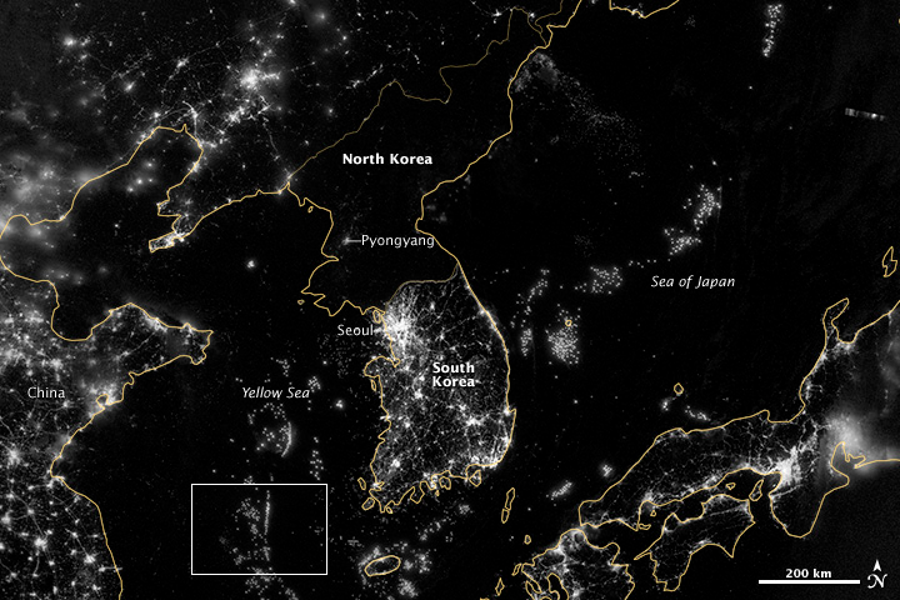Part
01
of one
Part
01
How rich is North Korea in natural resources?
Key Takeaways
- Based on data from multiple reports, the estimated worth of North Korea's natural resources could range from $6 trillion to $10 trillion.
- Two of the most important resources among its numerous natural reserves are iron ore and coal.
- Other mineral resources in North Korea that are ranked in the top ten globally in terms of overall size include tungsten, graphite, gold ore, and molybdenum.
- Though North Korea has a lot of mineral reserves, it lacks the technology and skill to access them, including a lack of equipment, expertise, and infrastructure.
- Furthermore, even if the country could access these resources, it will still lack the capacity to sell most of them due to international sanctions over its nuclear activities. These sanctions are targeted at the country's export activities, which saw, for instance, the end of magnesite export to countries such as Germany and the Netherlands.
Introduction
We have provided an overview of North Korea's natural resources. This overview includes the value of its natural resources which is estimated at trillions of dollars, the important natural resources in the country — including iron ore and coal, and why the country cannot benefit from these resources due to a lack of expertise and international sanctions that target export activities. Below is an overview of our findings.
Overview of North Korea's Natural Resources
Estimated Total Value of Natural Resources in North Korea
- A state-owned mining company in South Korea put a conservative estimate of the total value of natural resources in North Korea at $6 trillion in 2012.
- In the same year, however, a South Korean research institute valued the North's natural reserves at an estimated $10 trillion — 20 times larger than that of its neighbor in the South.
- Based on data from multiple reports, such as 1945, therefore, the estimated worth of North Korea's natural resources could range from $6 trillion to $10 trillion.
- Furthermore, while the country is blessed with massive reserves of natural minerals and resources, only over 200 of them are believed to have economic value and are economically mineable.
Most Important Resources
- Two of the most important resources among its numerous natural reserves are iron ore and coal.
- Of the estimated 728 mines in North Korea, about 241 or 33.1% (i.e., 241 * 100 / 728) of them are thought to be coal mines. 260 or 35.7% (i.e., 260 * 100 / 728) are thought to be metal mines, with the remainder, about 31.2% (100% - 33.1% - 35.7%) dedicated to the mining of industrial minerals.
- According to 1945, "These mineral resources can be found in many parts of the country, and are distributed across about 80% of the country."
- Coal deposits, both hard coal and brown coal, are found along the Taedong River — notably at Anju, north of Pyongyang, near Paegam in Yanggang province, and in the far northeast.
- Iron ore, both high-grade and low-grade iron ore, occurs and is mined in North and South Hwanghae, South Pyongyang, South Hamgyŏng provinces, and Musan in North Hamgyŏng province.
Some of the Largest Reserves of Other Minerals
- Other mineral resources in North Korea that are ranked in the top ten globally in terms of overall size include:
- Tungsten — sixth-largest tungsten deposits.
- The country's cumulative reserve of rare-earth minerals is occasionally considered one of the largest globally.
- Furthermore, "in terms of individual mineral reserves, one of the most significant may be North Korea’s supply of magnesite, with the reserve size or volume estimated at about 2.3 billion metric tons — and believed to be the second-largest in the world behind only China."
Why North Korea Cannot Benefit from its Natural Reserves
- First, though North Korea has a lot of mineral reserves, it lacks the technology and skill to access them, including a lack of equipment, expertise, and infrastructure. "Similar factors that act in combination to the former include the inability to purchase new equipment, limited supply of electricity, and the poor overall state of its power grid." The image below demonstrates the limited supply of electricity in North Korea.
- According to reports, the above barriers may have led to a shortage of mining equipment and a significant drop in its mining activities, "with the average operational rate of existing mines below 30% of their potential."
- Furthermore, the country prohibits private mining, which implicitly restricts the participation and potential augmentation of the private sector in the nation's mining activities.
- Second, even if the country could access these resources, it will still lack the capacity to sell most of them due to international sanctions over its nuclear activities. These sanctions are targeted at the country's export activities, which saw, for instance, the end of magnesite export to countries such as Germany and the Netherlands.
- Following the resolutions of the United Nations Security Council and the North's ballistic missile tests, China, which accounts for about 90% of North Korea’s international trade, announced that it'd cease all imports of coal, iron ore, and seafood from the country. These sanctions are set to impact the North's remaining major sources of income.
Research Strategy
For this research, we leveraged credible sources that are publicly available, such as 1945, Bloomberg, the Economist, and the National Interest, among others. Note that in some instances, slightly dated resources were used to add robustness and/or corroboration to the findings, considering the highly specific nature of the topic and the limited availability of more recent reputable sources.
